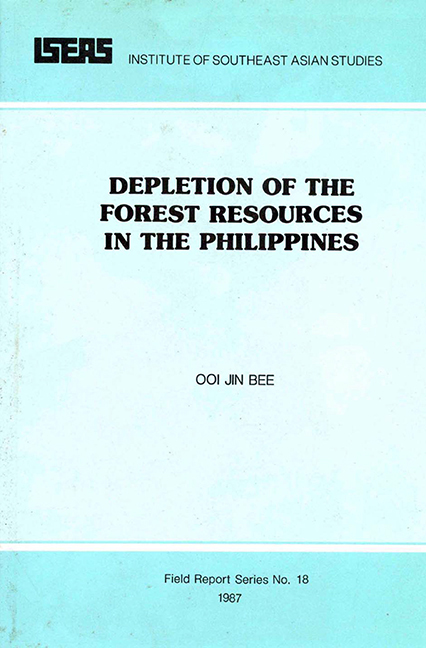Book contents
VI - The Problem in Its Wider Setting
Published online by Cambridge University Press: 21 October 2015
Summary
In the 1940s a consultant recommended that the Philippines should maintain a ratio of 40 per cent forest and 60 per cent non-forest land uses (Hyman 1983). Using a slope criterion, 18 per cent was the cut-off slope that would provide for this ratio. Since then the 18 per cent slope criterion has been enshrined as law – P.D.705 specifies that public lands exceeding that slope may only be alienated for forestry purposes. This in effect means that discussion on or about the forests of the Philippines would centre on the upland areas and the upland resource base.
These upland areas are being subjected today to ever-increasing pressure arising from the activities of different interested parties concerned with exploiting the resource base – the forests, the land, the minerals, and the hydro-power potential. The situation is a complicated one but it is possible to identify the main protagonists, each interested in the forests and the uplands in one way or another:
the Bureau of Forestry Development, which has taken over the functions formerly exercised by the Bureau of Forestry, is the governmental agency responsible for all matters concerning the forests in the public domain In the Philippines;
the National Power Corporation, concerned with the development of hydro-power resources in upland watershed areas;
the illegal loggers concerned with hardwood timber extraction;
the traditional occupiers of the more remote forested uplands – the Negritoes, who number only a few thousand and whose hunting and gathering way of life poses no threat to the forests they wander in;
the mountain tribes (Igorots) in the Cordillera region of North Luzon who practise sedentary agriculture based on rice cultivated on hill terraces, with some vegetable growing and some dryland crops cultivated on hill slopes;
the traditional upland groups, some of Musiim faith, known collectively as non-Muslim cultural minorities, who practise kaingin or shifting cultivation and whose activities in recent years have resulted in widespread deforestation of the uplands;[…]
- Type
- Chapter
- Information
- Depletion of the Forest Resources in the Philippines , pp. 52 - 54Publisher: ISEAS–Yusof Ishak InstitutePrint publication year: 1987

